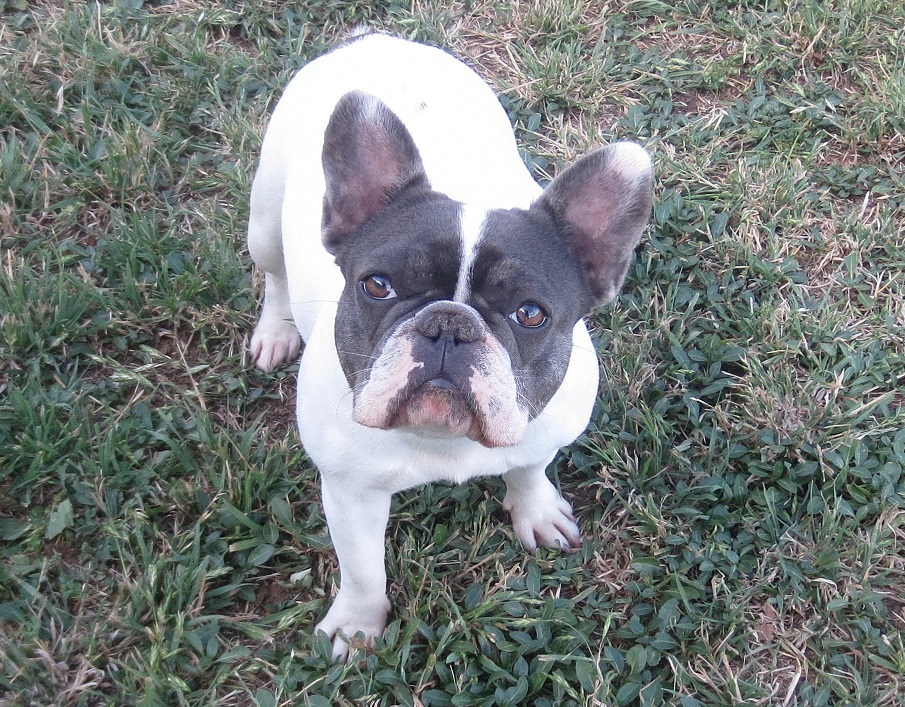

The reason no association or breeder will recognize the blue French bulldog as a breed is because many believe that the dog is prone to too many health problems. If you’re just interested in having one as a pet, you needn’t worry about the color of the dog or the fact that it simply is not recognized by many associations. The good news, however, is that this only matters if you are interested in showing your French bulldog. If one has a blue color to its fur, it’s not considered a real French bulldog and it’s not going to be recognized by any associations. The only French bulldogs allowed in shows or even recognized by breeder associations are those with the color palettes white, brindle, fawn and a mixture of white and brindle. The French bulldog is a recognized breed, but the blue coloration of some disallows them from being considered as show dogs or recognized as such. You will not find it acceptable to show or train a blue French bulldog as he or she will not be allowed to enter into any competitions because of their coloring. The blue French bulldog is not recognized by dog breeder associations. Read on to test your knowledge of blue French bulldogs. There are many things about the blue French bulldog you might be aware of, but there are also plenty of interesting facts you might not have known about in the past. The good news is that you won’t need to bathe this dog often since it’s a bit of a prissy animal that prefers to stay clean at all times. It has some other health issues, and it’s not the kind of dog that likes to get dirty. The most important is that this dog simply does not do will when it is outside often. When it comes to choosing the type of dog you want at home, it is important to consider several factors.

These dogs are very small and they love to live indoors. They began to breed their own and the name somehow stuck. They were known as “toy” dogs and they became very popular in France after the French discovered what the English were doing to breed the dogs. They very selectively bred these dogs so that their litters would be born very small and very friendly, and it worked well. It was several centuries ago in England when lace makers and breeders began to downsize bulldogs. They are very friendly, love attention and affection from anyone, and they’re very cute dogs that will elicit a lot of attention from others. They are not the kind of dogs that you want to leave home often or ignore when you are home. It’s a very masculine little dog that’s primary purpose in life is to act as a companion. This is a ‘silly’ dog that breathes loudly, has some funny habits and does get sick more often than other dogs. These are very small dogs that are known to be very affectionate and needy, and they’re not the kind of bulldog that makes a good watch dog or protector. What makes this dog a bit different in terms of color is nothing more than the fact that the dog has a slightly bluish hue that derives from genetics. Blue French bulldogs usually have light blue or blue eyes that look simply thrilling and dramatic.The blue French bulldog is just like any other French bulldog save for the coloration of the dog’s fur. However, in case it’s difficult to determine when a puppy is still small whether it’s blue, it should be obvious that the nose is blue. The coat color of blue dogs may vary from almost black, to dark grey and light grey to blue. If both parents carry this rare dilute gene, then it’s very likely for their puppies to have a blue/mouse coat. The majority of blue French bulldogs and Isabella French bulldogs are completely healthy if have been properly bred. It’s important to note that not all breeds carry this faulty allele. That’s why is very important to choose only completely healthy Frenchies for mating. This kind of condition is actually the result of a faulty version of the d allele, known as dl. This misconception has most likely come from the prevalence in some breeds of a condition known as Color Dilution Alopecia (CDA). It’s often claimed that dilute dogs are less healthy than those with normal pigment.

He reason for having a sort of grey-blue coat is in carrying a dilute gene. If a dog was properly bred, and its parents were completely healthy, there’s no way that such a dog will express health issues throughout its lifetime.T As a reputable French bulldog breeder, I must say that it’s not true at all. There are common misconceptions about blue-colored Frenchies that they usually show dozens of health issues in the future. Blue French bulldogs can thank only to their genes for having such an amazing fur color.


 0 kommentar(er)
0 kommentar(er)
